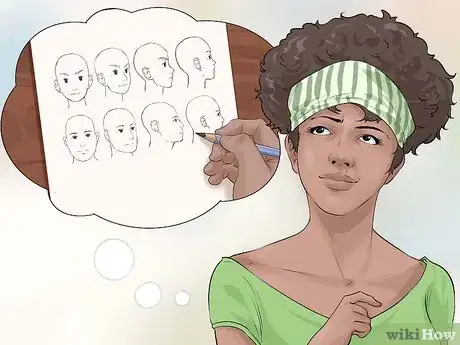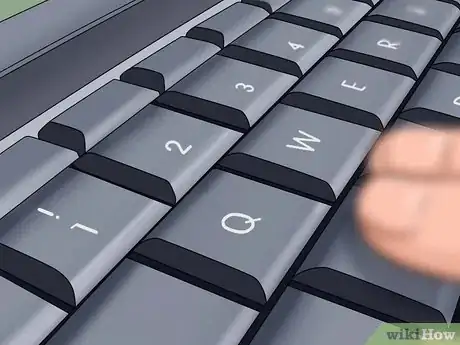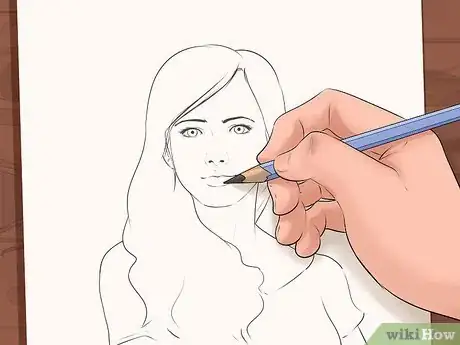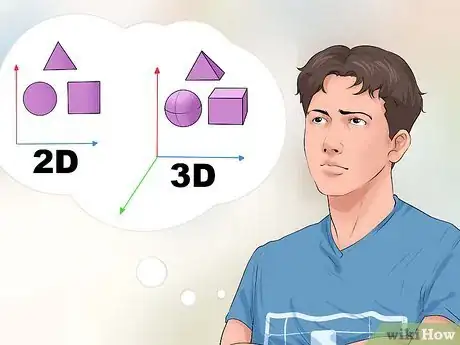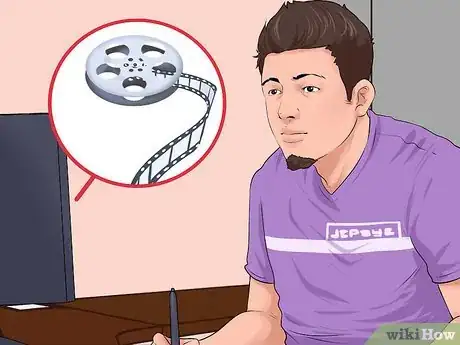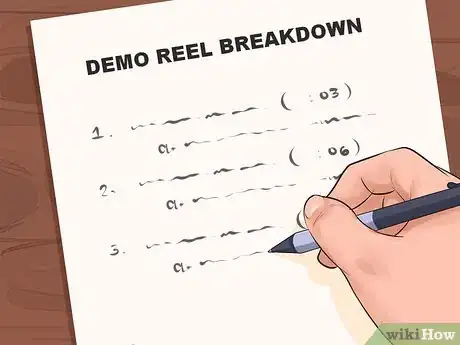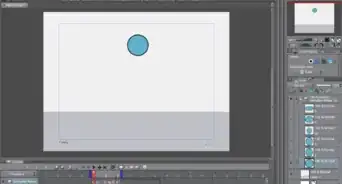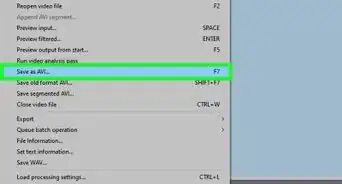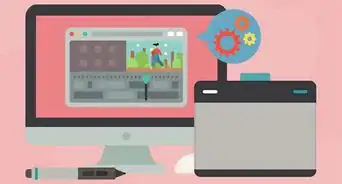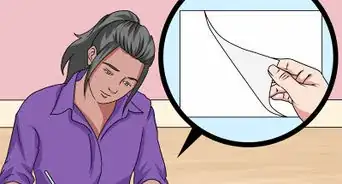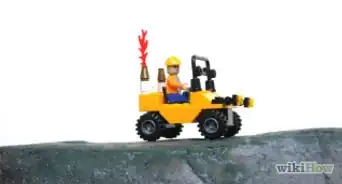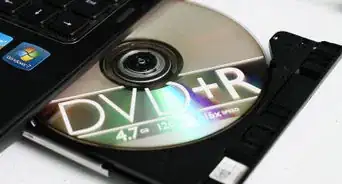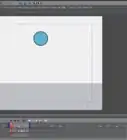This article was co-authored by Adina Zinn, MPA. Adina Zinn is a Certified Career & Life Coach and the Owner of Love Your Work Career and Life Coaching. With five years of experience, she specializes in using a holistic coaching approach to help people achieve their career and life goals. Adina earned a BA from The University of California, Santa Cruz and an MPA from San Francisco State University. She is also a Certified Career Coach through Career Coaches Institute and a Certified Life Coach through The International Coaching Federation.
There are 11 references cited in this article, which can be found at the bottom of the page.
wikiHow marks an article as reader-approved once it receives enough positive feedback. This article has 14 testimonials from our readers, earning it our reader-approved status.
This article has been viewed 130,553 times.
If you're creative, good at using computers, and love animation, being an animator might just be the perfect job for you! Professional animators are in high demand by motion picture studios, advertisers, video game developers, and more. In this article, we'll walk you through everything you need to know about becoming an animator, from acquiring the right skills and credentials to landing your first job. Let's get started!
Steps
Getting the Proper Skills Training
-
1Consider obtaining formal education. Although there are always exceptions, it will be easier to find a job as an animator if you obtain a bachelor's or associate's degree from a university or technical college that has a good record in the field.
- You want to look for an educational institution that offers courses in 2-D and 3-D animation. Although some students in animation choose to major in art, finding a program with a degree in animation specifically is even better.
- To help you select a school, look up listings and reviews of animation schools. For example, the Animation Career Review lists top schools for private game design. [1] It also has listings of the top animation schools by region. [2]
- You might be able to choose a two-year or online program instead. The Animation Career Review is one place you can check for animation school programs. The site has a detailed listing of schools that offer animation related degrees. You should look for schools that offer majors in the specific types of animation you are interested in. For example, if you want to be an animator of video games, you should choose a school offering majors in things like "gaming design" and "3D modeling for games." [3]
-
2Pinpoint changing trends in the field. As technology changes, and consumers demand more sophisticated imagery, certain areas of the field offer more job opportunities than others. Study the field, so you understand where its growth areas are and how your skills best fit.
- Reading trade publications that specialize in animation fields is a great way to embrace trends and have a better understanding of the industry.
- Cartoonists (2-D animators) are not as in demand these days as technical animators who use computers to create imagery. Just consider how movie animation has changed from the days of Mickey Mouse to the digital complexity of Toy Story.
Advertisement -
3Consider specializing. You should probably specialize in one aspect of the field that you are best at and love most. Don't try to do everything at once. Find your animation niche, whether it's drawing by hand or using computers to create complex special effects. If you love to draw and are good at it, maybe 2-D is the way to go. If you have a mind for math and love using computers, 3-D is the best bet.
- Universities and other training programs offer specialties in areas like game design, computer animation, graphic design, visual art, motion graphics, and entertainment animation.
- People sometimes figure out which specialty fits them best when they are already in school. Don't put too much pressure on yourself to specialize right away. However, by the end of your schooling, it's good to demonstrate a focus.[4]
- Specializing will help you pick the right degree program and courses. You will need different courses to be an animator for Hollywood films than you would need to be an animator for gaming. Some universities have degree programs designed along various specialties.
- Mastering the fundamentals should not be forgotten, however. If you can show employers you also have a strong basis of the fundamentals, you will be more marketable.
-
4Get computer skills. This is extremely important. You should demonstrate artistic creativity, however you will be far more marketable as an animator these days if you also learn computer programs commonly used by animators. It's essential.
- Common programs used by animators include website design software (like Dreamweaver), software used for graphics and photo imaging (like Creative Suite), 2-D and 3-D animation software (such as Studio Max, Maya, Flash, and After Effects), and video editing software (such as Premiere or Final Cut Pro). [5]
- These computer programs can be very expensive. However, many college programs offer discounts for students.
-
5Learn traditional art. Animators aren't just technological robots. They need to have an understanding of artistic concepts and be able to draw. This is true for people going into 3-D animation, also.
- Traditional art training helps an animator create poses and stage shots. [6]
- Good animators will understand how to draw by hand, how to space the drawings properly to create the motion they want, and how to create motion in their characters. In the field, this is called being a "draftsman."
- There are jobs for animators who draw only by hand, but it's a tougher field these days. Still, taking some courses in art will make most people a better animator. Some animation-oriented companies like Pixar actually say they put as much emphasis on artistic ability as computer skills for all animators.
-
6Obtain well-rounded skills. There are other courses and experiences you may need to be a good animator that can be found outside the specific degree programs that focus on animation training.
- Some big studios look for animators with acting experience. They believe it helps them better capture life and movement in their characters. Remember, they want to hire you to create personality and storyline - to recreate life, essentially.
- Courses in science and, especially geometry, are valued by animators. Animators must be creative and visual, but they also need to have an understanding of geometry.
- If taking a formal course or class isn’t available to you, no worries! Learn new skills by scouring YouTube and other creative platforms, and start practicing.
-
7Gain professional experience. Build your resume with actual work experience. This is true while you are still in college. Start then (or even in high school if you can). Animators need to demonstrate professional experience, not just a college degree, to get their first job.
- Many animation companies offer apprenticeships and internships for animation students looking to build their resumes to get their first job. Sometimes, these are unpaid.
- Consider volunteering. This can be a good way to build up your resume. You may have to work for free for a while, but the work will help you get a job. Many non-profit organizations would love to have an animator help them with projects.
- You can put volunteer work on your resume and in your portfolio. Companies won't care much that you weren't paid to do it. The critical thing is to show people what you have done and can do in a very concrete way.
- Entry-level animation jobs usually require one year professional experience at least, and you will probably need about 5 years experience to obtain a more advanced position. [7]
Learning what Animators Do
-
1Study the job descriptions for animators. You need to have a clear understanding of the job and its many specialties, so you can make sure you have matching skills. All animators bring characters or images to life on screen by creating a sense of motion, but they work in different fields.
- Some animators create pictures that are used by motion picture studios and advertising agencies. Others create storyboards that are used by television and movie directors to plan their filming. These storyboards illustrate what will be seen on screen, such as where actors will stand. There are many different roles that people can play in the animation process.
- Animators create special effects that appear in movies, television shows, and video games. Animators also work as modelers, in computer animation, as painters, as game designers, and as technical directors.
- Consider freelancing. Sometimes animators freelance on the side in different areas of the field.
-
2Learn the personality traits needed by animators. Employers look for "hard" skills like the ability to use computer programs. They also consider "soft" skills, which are the personality traits that many animators need to have.
- It can take many weeks to create a 10-second animation. If you don't have the patience for such an endeavor, this might not be the best field for you. Don't expect to learn the skills of animation in a couple of weeks, either. The field requires a great deal of technical training.[8]
- Animation is fun, and many animators grew up enjoying animated video games or movies. Imagine being asked to create a fight between two Transformers! If you enjoy animation as a consumer of media, this might be a good career field for you.
- Animators are perceptive and good observers of life and human nature. This is because they will be asked to recreate facial expressions and the way that people move. They need to have the ability to create story lines, not just characters.
- Animators need to work well with other people. It's rare for an animator's role not to involve teamwork. There are many, many steps in the entire animation process.
- Check to see if you have some of these skills by talking a Myers Briggs or Clifton Strengths test.
-
3Master the required steps to create animation. The animation process can be broken down into different sections. It involves a lot more than simply putting a pen to paper (or finger on a computer mouse). By mastering these stages, you can better choose which role you want to play.
- Pre-production. In this stage, the animator conceptualizes the final product. An animator might create a storyboard that includes sketches of each frame and helps develop and visualize the storyline. The drawings in a storyboard often contain text describing the movements of the characters.
- Sometimes animators will shoot reference videos in pre-production. For example, if they are going to create a character throwing a baseball, they might want to shoot and study a video of a person throwing a baseball. [9]
- Model sheets show characters' facial expressions. These specific drawings allow animators to keep the characters' personalities consistent. Then, the visuals department creates animatics, which are simple mock ups of the visual animation. An animator will also decide on a few key poses, which are the core positions of the character.
- Production. Layout artists create 3-D versions of the storyboard drawings. Basically, they bring them to life. Some forms of animation use modelers who shape the drawings into life. Textures provide the tiny details that make animation seem real, such as cracks in sidewalks. Rigging means the characters' bones and motion is further defined on screen. Some forms of animation use motion capture, which means an actor or actress' motion is captured and then matched to the animation drawings.
- Post-production. There are three basic components of post-production: Compositing brings together all of the previous elements in production into one seamless storyline. Sound editing adds sound effects and lip-syncing to the animated drawings. Video editing is a process to create proper flow and storyline by rearranging images if necessary.
- Research the different levels, skills, steps, and styles of animation on YouTube. Then, start practicing yourself.
-
4Study the differences between animation types. Most animation is either 2-D or 3-D. To understand the difference, recall that traditional cartoons like Aladdin were 2-D and movies like Toy Story were done in 3-D and show more complex dimensions.
- To be a 2-D animator, you would draw everything you see frame-by-frame. You draw key poses. Then you draw every movement in between. Artistic ability by hand is important for all animators, but it's more important with 2-D animation. Animation usually uses about 24 frames a second. Slower movements can use 12 frames a second. In stop animation, where characters are still, you don't use many frames.
- 3-D animators move characters like puppets on the computer. 3-D animators create a model of the character. The animator can grab controls using a computer to create nuanced movement by the character. 3-D animation requires a knowledge of graphs and curves and basic geometry. 3-D animators rarely use stop animation. They have to always keep the character in motion or it will look like a mistake.[10]
Creating a Portfolio
-
1Create a demo reel. It's common in the field for employers to want to see your work on a demo reel. A demo reel is a video in which short examples of different animation scenes you've created plays on the screen. Some companies prefer demo reels that highlight a short segment of your best piece instead of multiple examples of your work.
- You might want to alter your demo reel for various positions to highlight the style and training needed for that specific job. Different companies prefer different looks.
- Demo reels for beginners should be about 2 minutes, but no longer than 4 minutes for animators with more experience. Select your best work for the reel, not every single thing you've done.Start and end with the best work.[11]
- Some employers want to see a DVD of the demo reel, but others will accept a link to the demo reel on your website. Some companies, like Pixar, tell applicants they will send them information on what they want to see in a portfolio and demo reel when they apply. [12]
- Use original sound in pieces that have dialogue, but avoid adding distracting music to the reel. You can use music, but just make sure it complements the animation instead of overpowering it. Some employers will turn down the music when watching your animation anyway.
- Number each shot. The number will usually appear on the top right of the screen when each new animation segment appears on the demo reel.
- Include a title card. This frame should have your name and contact information on it, as well as the job you're applying for. The title card should appear at the beginning and at the end of the demo reel.
- Top animation companies are looking for creative ideas in a demo reel in addition to technical skills. Don't just do what everyone else is doing. Be willing to take chances. One animator said he wanted to use a diving shot, but instead chose a diving shot in which the character slipped and fell, to differentiate his reel from other reels with diving shots.[13]
- Upload the reel to You Tube, Vimeo, and your website.
-
2Provide a demo reel breakdown. Most companies will want a summary of what you did on screen written in text form that they can easily refer to when judging your work.
- The numbers on the demo reel should match the numbers on the demo reel breakdown.
- Tell the person watching exactly what you did. For example, if you have a ball on screen, explain whether you shaded the ball.
-
3Write a cover letter and resume. These are two traditional job-seeking documents that many animation companies will want you to submit with your demo reel.
- The cover letter should introduce yourself and your demo reel. You want to sell yourself in the cover letter.
- The resume should list your education and training and places of employment that are relevant to the position, as well as any awards you have received and specific skills you possess.
-
4Develop an online portfolio site to showcase your work. You will need to pull your best work into a portfolio to apply for an animation job. People will want to see examples of what you have done, not just be told what you have done. A portfolio is not optional. It's expected.
- Include a biography section. You need to give employers a sense of you are as a professional.
- Provide longer samples of your work.
- Make sure there is a contact section.
- Creation a section for your demo reel and resume.
- Study examples of real portfolio sites by professional animators. You can find many of these online, and they will give you a better understanding of the norms in the field and what the competition is doing.
Community Q&A
-
QuestionI'm 26 and an accountant. I don't enjoy my job at all! I really want to be an animator. What do you think? Is it too late for me?
 Community AnswerIt's never too late, and you're still very young. Go for it if you want to.
Community AnswerIt's never too late, and you're still very young. Go for it if you want to. -
QuestionWhat are the pros and cons of 2D and 3D animation?
 CaeiiaTop Answerer2D needs more shading/contrast to make it pop out. It also requires you to draw frame by frame, and there needs to be a lot of frames in order to make the animation smooth. 3D can look strange at times (ever see those poorly done 3D cartoon animations?), and you need to know how curves work. But, it doesn't require drawing frame by frame, as a 3D model can be dragged around and moved to create a sequence of film.
CaeiiaTop Answerer2D needs more shading/contrast to make it pop out. It also requires you to draw frame by frame, and there needs to be a lot of frames in order to make the animation smooth. 3D can look strange at times (ever see those poorly done 3D cartoon animations?), and you need to know how curves work. But, it doesn't require drawing frame by frame, as a 3D model can be dragged around and moved to create a sequence of film. -
QuestionCan I be an animator at 11 years old?
 Community AnswerYou can certainly begin the journey to become one. Start learning everything you can about animation and practice, practice, practice. Eventually, when you're a little older, you'll be in a good position to get a job as an animator.
Community AnswerYou can certainly begin the journey to become one. Start learning everything you can about animation and practice, practice, practice. Eventually, when you're a little older, you'll be in a good position to get a job as an animator.
Warnings
- Trolls are lurking online. Don't listen to them. You can't please everybody.⧼thumbs_response⧽
- Your first animation probably won't be your best, so don't get discouraged. Don't create and submit a demo reel until you have a good array of strong work.⧼thumbs_response⧽
- Don't use music you don't own. You may get in trouble if you do.⧼thumbs_response⧽
References
- ↑ http://www.animationcareerreview.com/articles/top-50-private-game-design-schools-and-colleges-us-%E2%80%93-2015
- ↑ http://www.animationcareerreview.com/articles/top-10-animation-schools-and-colleges-southwest-%E2%80%93-2015
- ↑ https://www.animationcareerreview.com/find-a-school
- ↑ http://blog.portfolium.com/how-to-become-an-animator/
- ↑ http://study.com/how_to_become_an_animator.html
- ↑ http://www.creativebloq.com/animation/job-at-pixar-10121018
- ↑ http://study.com/how_to_become_an_animator.html
- ↑ http://blog.digitaltutors.com/becoming-3d-animator-takes-get/
- ↑ http://www.bloopanimation.com/6-steps-of-animation/
About This Article
Before becoming an animator, decide what kind of media you'd like to animate. Animators can work on major motion pictures, video games, television shows, or even music videos. However, no matter what type of media you'd like to work on, you'll need to have solid art and computer skills, the ability to draw the same images several times, and a keen sense of observation that allows you to master creating facial expressions. You'll also need a lot of patience as well as an ability to work well with others. To learn how to gain professional experience as an animator, keep reading!


